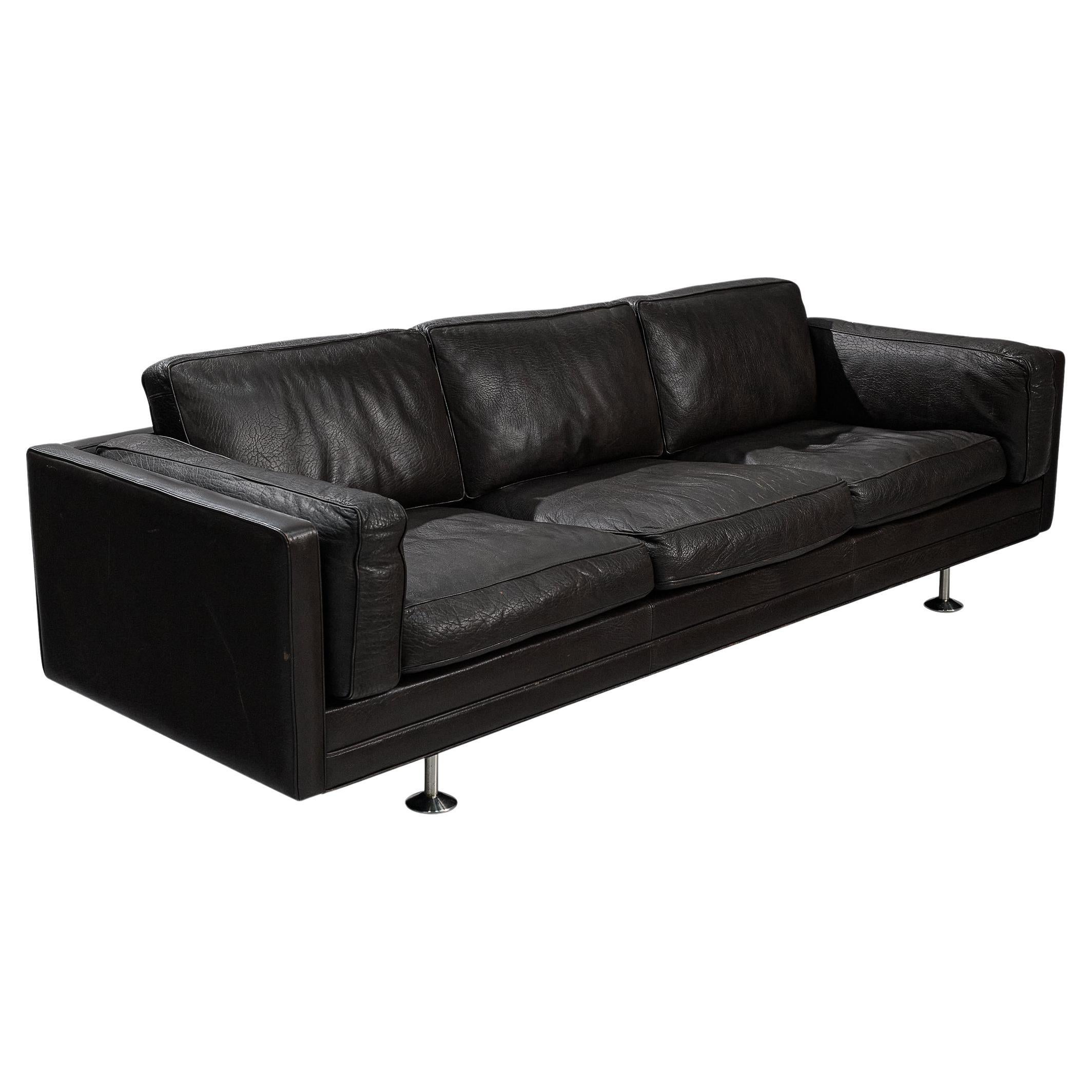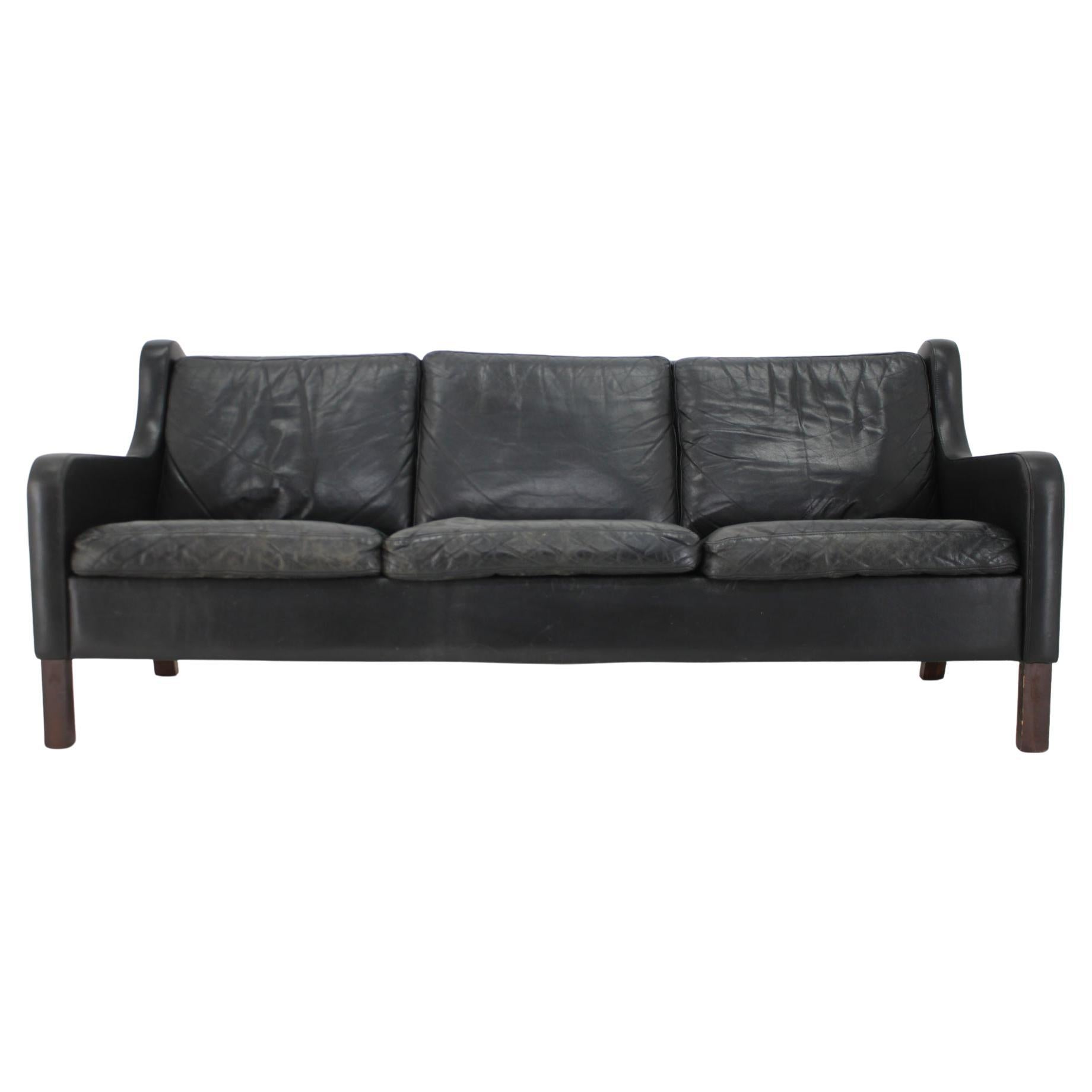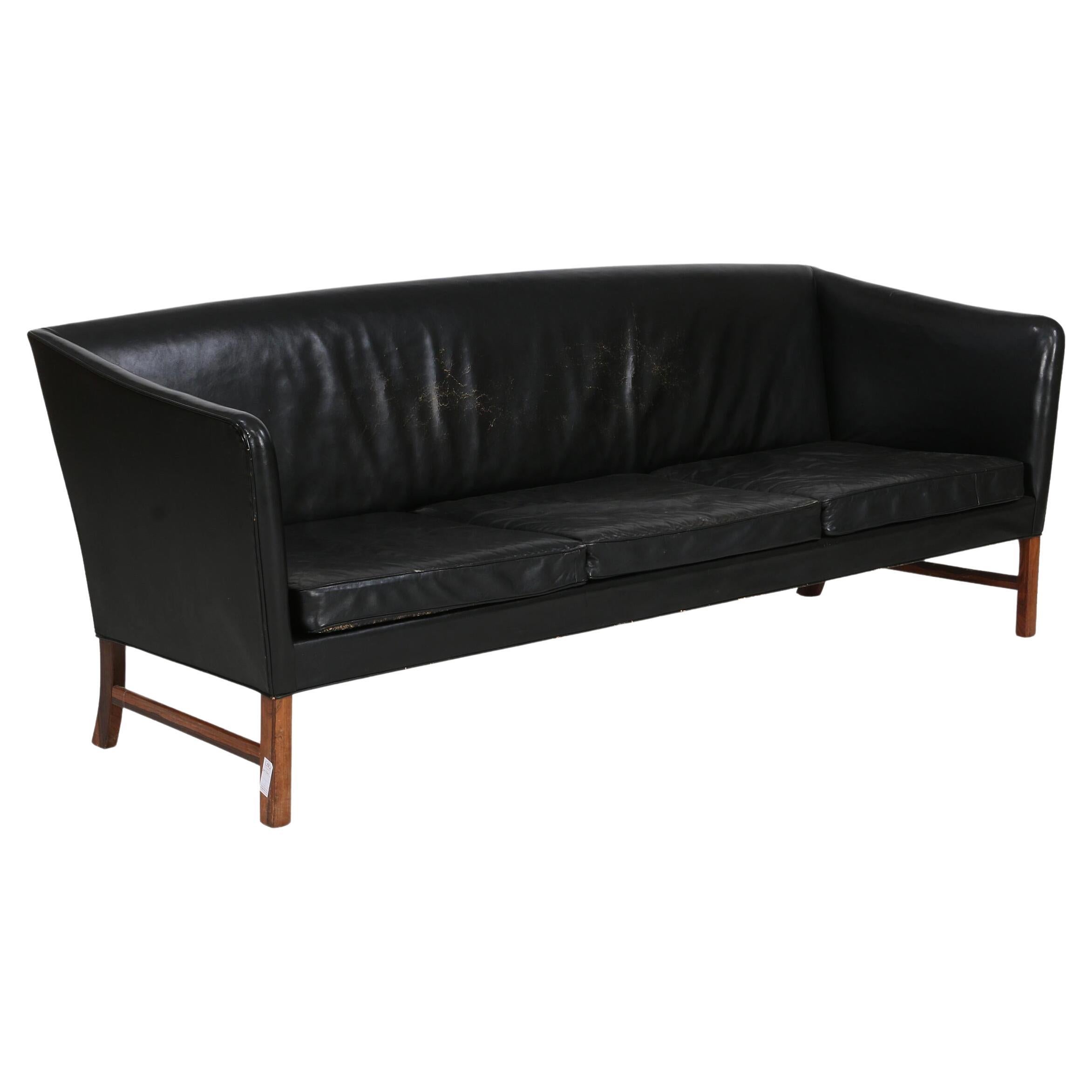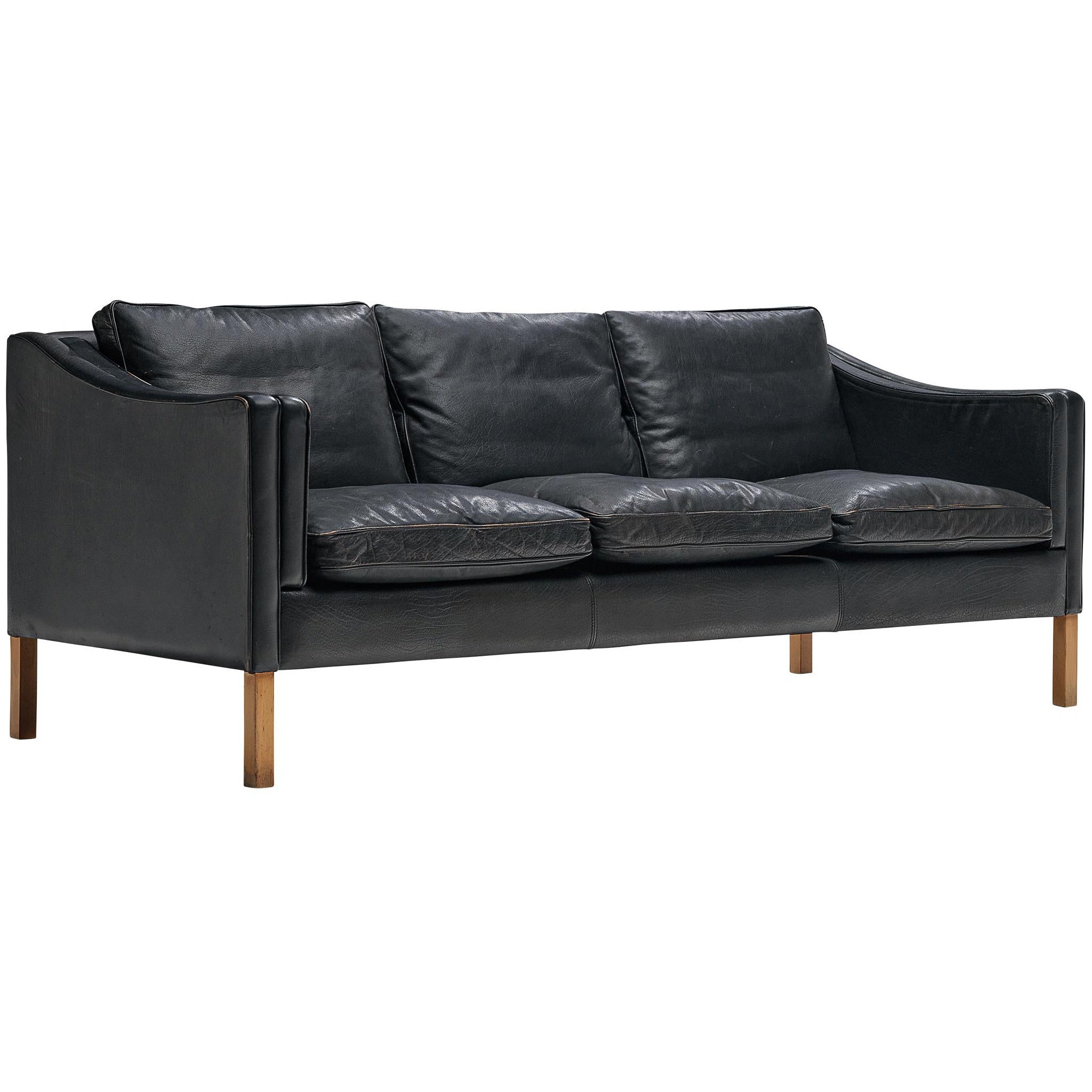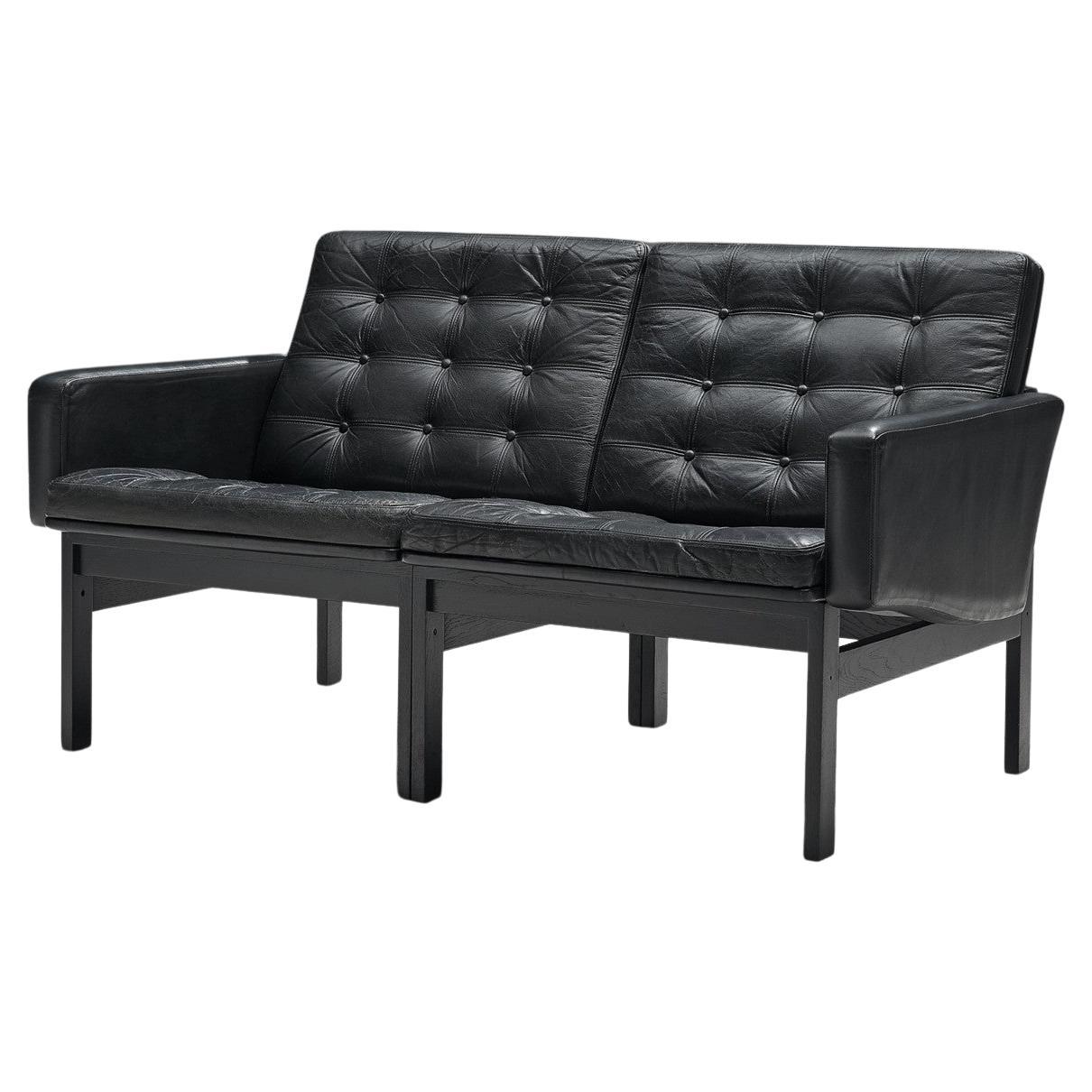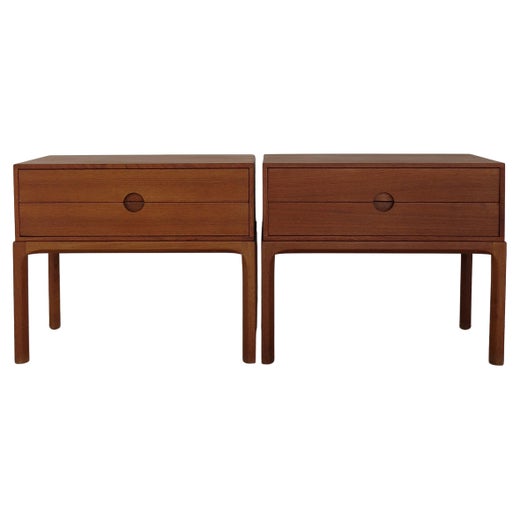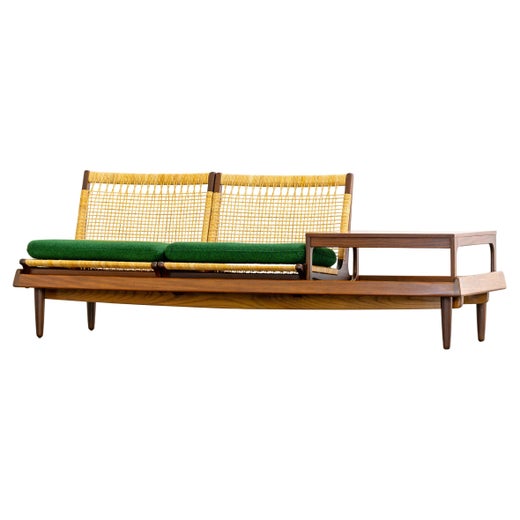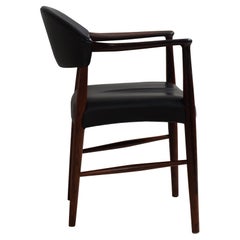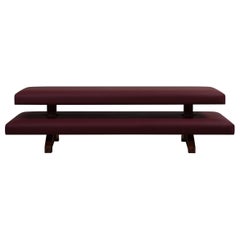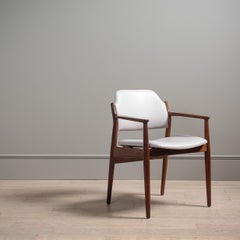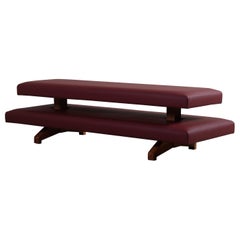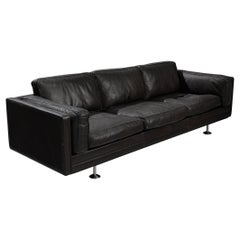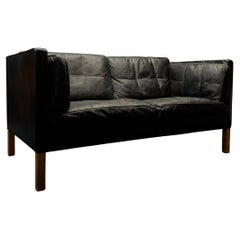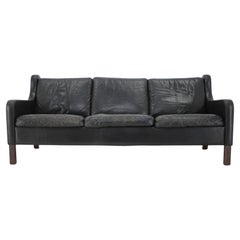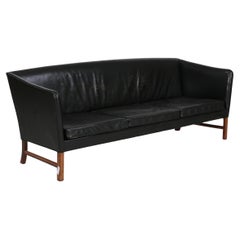Anthracite Black Leather Coupe Sofa
About the Item
- Creator:Kai Kristiansen (Designer),Bramin Mobler (Manufacturer)
- Dimensions:Height: 43.71 in (111 cm)Width: 64.97 in (165 cm)Depth: 31.5 in (80 cm)Seat Height: 14.97 in (38 cm)
- Style:Modern (Of the Period)
- Materials and Techniques:
- Place of Origin:
- Period:
- Date of Manufacture:circa 1970's
- Condition:Wear consistent with age and use.
- Seller Location:London, GB
- Reference Number:1stDibs: LU1232243598662
Kai Kristiansen
With a passion for math and engineering, Kai Kristiansen has created high-quality wood furniture for decades. Beginning in the 1950s, his coffee tables, chairs, modular shelving and other furnishings were made in the style that would become internationally renowned as Danish modern and boasted clean lines, perfected functionality and exacting craftsmanship.
Born in Denmark, Kristiansen trained in cabinetmaking before studying with Kaare Klint, often cited as the “father of modern Danish design,” at the Royal Danish Academy of Fine Arts in Copenhagen. At just 26 years old, Kristiansen opened his own studio.
Kristiansen had his mid-century breakthrough in 1956 with the Chair #42, which he made with Schou Andersen. Unlike most other chairs at the time, Chair #42’s armrests, with their wealth of radical angles, were connected to the back rather than the front legs. This unconventional flourish makes the backrest appear as though it is floating in midair above the seat.
Kristiansen’s next innovation was a modular wall system in 1957 — three years ahead of Dieter Rams’s more famous 606 Universal Shelving System. Called the Reolsystem Wall Unit, produced by SB Feldballes Møbelfabrik, it’s also known as the FM Wall Unit as FM/Fornem Møbelkunst began producing it in the 1960s.
Kristiansen would go on to work with other leading Danish furniture manufacturers such as Magnus Olesen, Fritz Hansen and Vildbjerg Møbelfabrik, designing everything from chairs and desks to sideboards and cabinets, frequently in rosewood and teak. (The latter was a sought-after wood by Scandinavian modern designers.)
While many of Kristiansen’s timeless designs remain in production, such as his Paper Knife sofa, which was reintroduced by Miyazaki Chair Factory in 2008, and his 1950s Entré collection, which was relaunched with Great Dane Furniture in 2016, others are prized as vintage mid-century pieces.
Today, Kristiansen is still at work on new furniture with an expert eye to thoughtfully functional designs that are made to last.
Find a collection of vintage Kai Kristiansen furniture on 1stDibs.
Bramin Mobler
Bramin Møbler manufactured covetable Scandinavian modern furniture from the mid-1950s until the early 1980s.
Originally founded as N.A. Jørgensen Møbelfabrik in Bramming, Denmark, the company rebranded as Bramin Møbler in the late 1950s. During the 1960s, Bramin Møbler’s offerings retained the simplicity and warmth commonly associated with Scandinavian cabinetmaking traditions and the N.A. Jørgensen Møbelfabrik name but its collaborations with forward-thinking designers helped steer it toward adopting the Danish modern style that had captivated new homeowners in the United States during the postwar years.
Bramin Møbler prioritized quality, form and function — attributes that were promoted by the firm in its print ad campaigns. Its credenzas, dining tables and sideboards were made from strong, rich woods like oak, rosewood and teak (a highly prized material in the mid-century modern era), while its artisans upholstered the company’s durable seating with inviting materials such as wool and leather.
Bramin Møbler collaborated with many legends of Scandinavian and Nordic design, including Johannes Andersen, Hans Olsen, Kurt Østervig and Frank Reenskaug. Its most successful partnership was with Norwegian furniture designer H. W. Klein, who studied under Finn Juhl — a stylistic maverick and master of mid-century Danish design — and moved to Bramming to work for Bramin Møbler.
Over the course of two decades, Klein created elegant coffee tables and cabinets for Bramin Møbler that featured clean lines and gracefully tapered legs, but he is best known for his lounge chairs — most notably, his leather-padded swivel lounger, with its five-spoked, wheeled base.
The global recession of the 1980s hit Bramming hard. Many of the region’s numerous furniture manufacturers had to close their doors — Bramin Møbler included. Bramin Møbler creations remain highly sought after by collectors and enthusiasts of Scandinavian and mid-century modern furniture.
Find vintage Frank Reenskaug rocking chairs and other Bramin Møbler furniture such as tables, storage pieces and more for sale on 1stDibs.
- ShippingRetrieving quote...Shipping from: London, United Kingdom
- Return Policy
More From This Seller
View AllMid-20th Century Danish Mid-Century Modern Armchairs
Leather, Walnut
21st Century and Contemporary English Modern Ottomans and Poufs
Leather, Oak
Mid-20th Century Danish Scandinavian Modern Armchairs
Leather, Walnut
21st Century and Contemporary English Modern Daybeds
Leather, Oak
21st Century and Contemporary English Modern Sofa Tables
Leather, Oak
Mid-20th Century Danish Scandinavian Modern Lounge Chairs
Beech, Teak, Wool
You May Also Like
Vintage 1960s Danish Mid-Century Modern Sofas
Metal
Vintage 1960s Danish Mid-Century Modern Sofas
Leather, Oak
Vintage 1970s Danish Mid-Century Modern Sofas
Leather, Wood
Vintage 1960s European Scandinavian Modern Sofas
Leather
Vintage 1960s Danish Scandinavian Modern Sofas
Leather, Wood
Vintage 1960s Danish Scandinavian Modern Sofas
Leather, Oak
